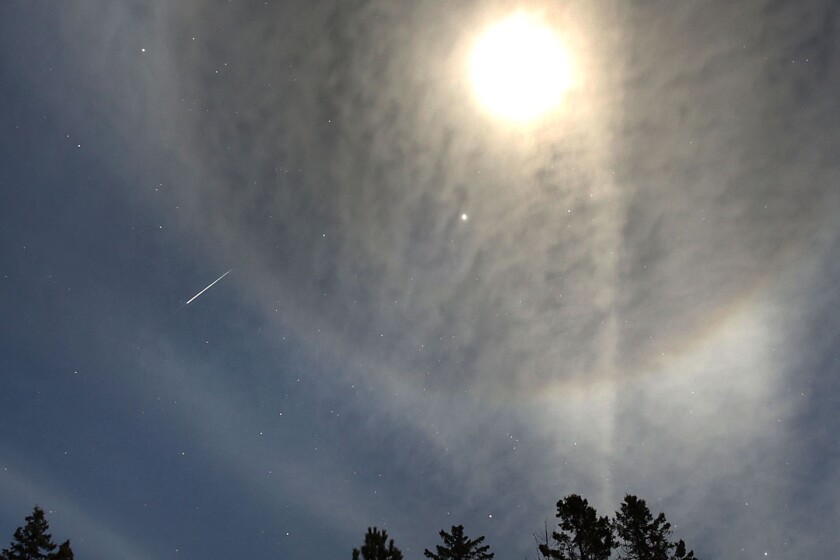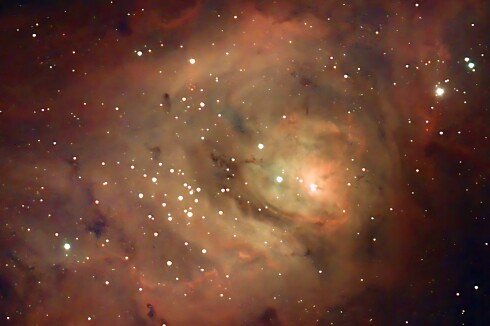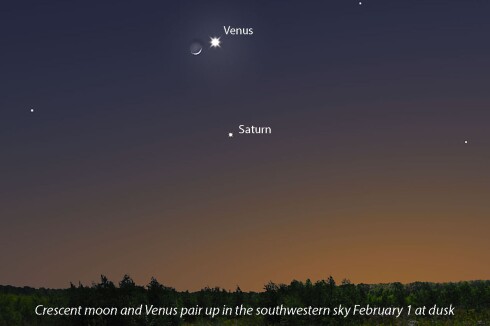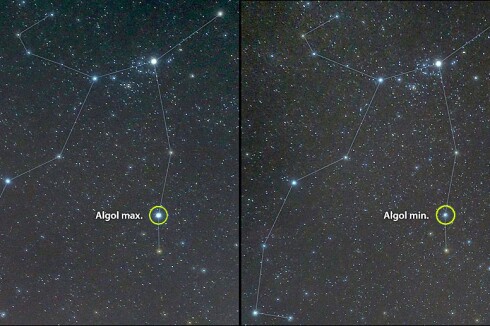Floats, dancers and celebrities in vintage cars are a big part of any parade. But I love bands best. You can hear them coming from a distance, and when they finally arrive, the explosive sound, earnest faces and coordinated marching always give me a thrill.
The winter stars are like that. They're bright, sparkly and arrive "from a distance" low on the eastern horizon and gradually rise and pass overhead. Right now, you'll see a half-dozen of these luminaries (labeled on the map) working their way up the eastern sky at nightfall. Brightest of them and leading the crew is Jupiter.
ADVERTISEMENT
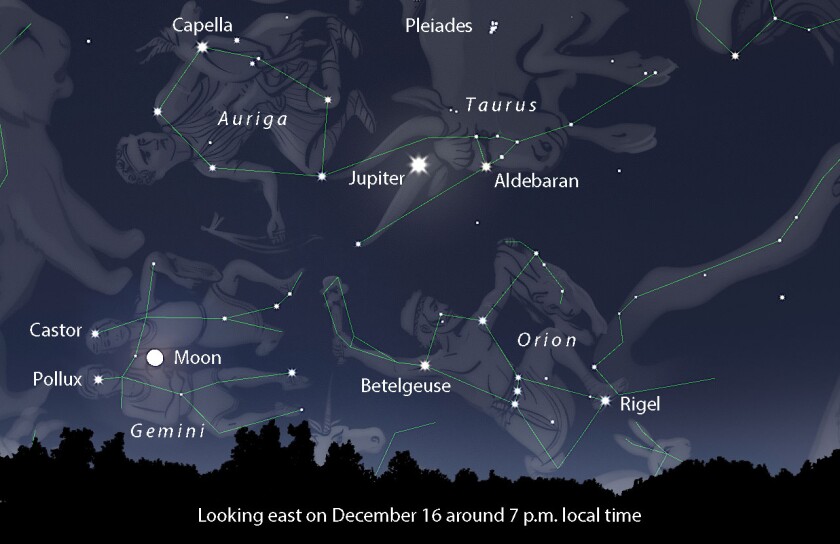
While not close to Earth in human terms — it's currently 381 million miles away — Jupiter is the closest it's been since November 2023. About every 13 months our planet and the gas giant snuggle up on the same side of the sun. That's when we're nearest. So if it looks extra bright right now that's one of the reasons why. The other is that Jupiter shines from Taurus the Bull and occupies nearly the same spot the sun did last June at the summer solstice. Like the summer sun, Jupiter climbs high in the sky. And when there's no competition from a bright moon the planet looks incredibly bright.
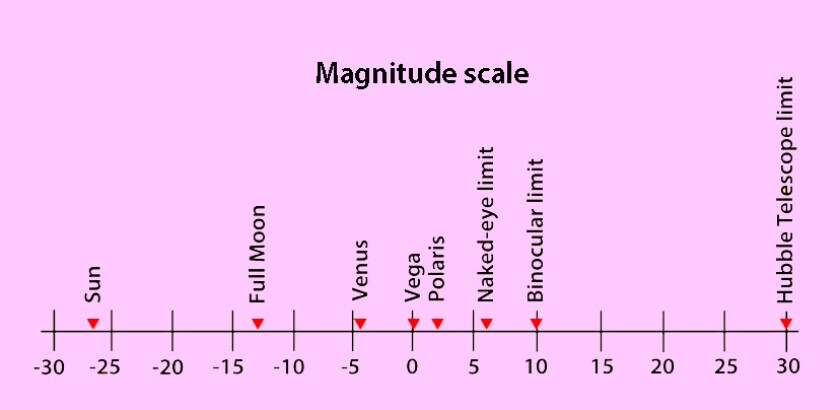
Astronomers measure brightness using the magnitude scale. The brightest stars and planets have negative magnitudes, while the faintest are assigned positive numbers. A typical bright star has a magnitude of 1, while the faintest star we can normally see is magnitude 6. Big telescopes can reach much deeper — down to 30th magnitude. At the other end, the brightest nighttime star, Sirius, gleams at magnitude -1.5, Jupiter at -2.8 and Venus (the brightest planet) at -4.3.
Location and timing affect Jupiter's apparent brightness. But it's also intrinsically bright because the planet is enormous and covered in clouds. You could stuff 1,300 Earths inside it. That's one big pumpkin! While its deep interior may be made of rock, Jupiter is mostly gas and clouds with no solid surface. Those clouds reflect a lot of sunlight and help to boost its light.
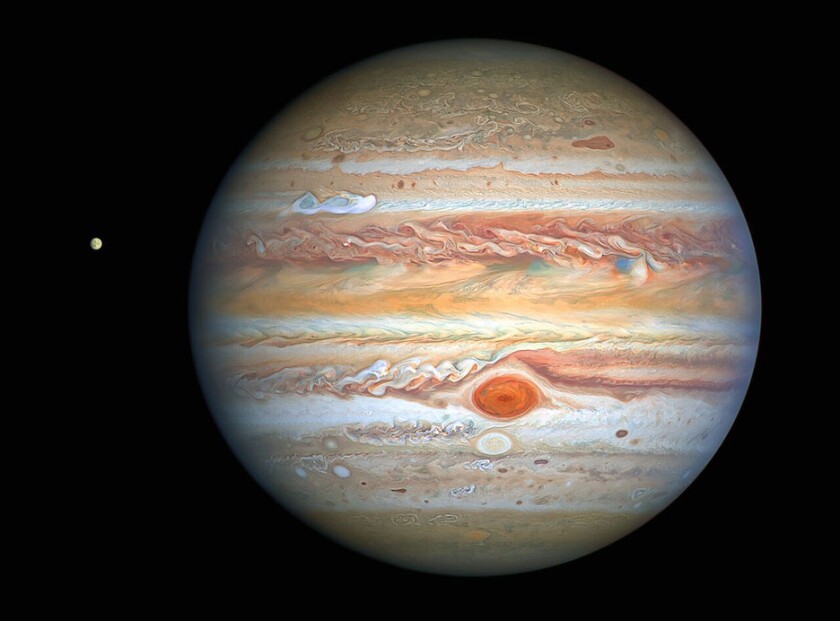
Viewed through a telescope, Jupiter looks like a striped marble. Powerful jet streams blowing upward of 250 miles per hour — nearly twice the speed of winds in a Category 5 hurricane — stretch and smear the clouds into alternating dark and light bands called belts and zones, respectively. While water clouds form within deeper levels of the atmosphere, most of the clouds we see are made of ammonia, which freezes into ice crystals at Jupiter's chilly distance from the sun.
The darkest and most visible of them are the North and South Equatorial Belts. Even a small scope will show these two parallel stripes on either side of Jupiter's bright Equatorial Zone with a magnification of just 30x. Watching changes in the planet's clouds and storms — the biggest and best known of which is the Great Red Spot — is something anyone can follow with a 6-inch or larger telescope.
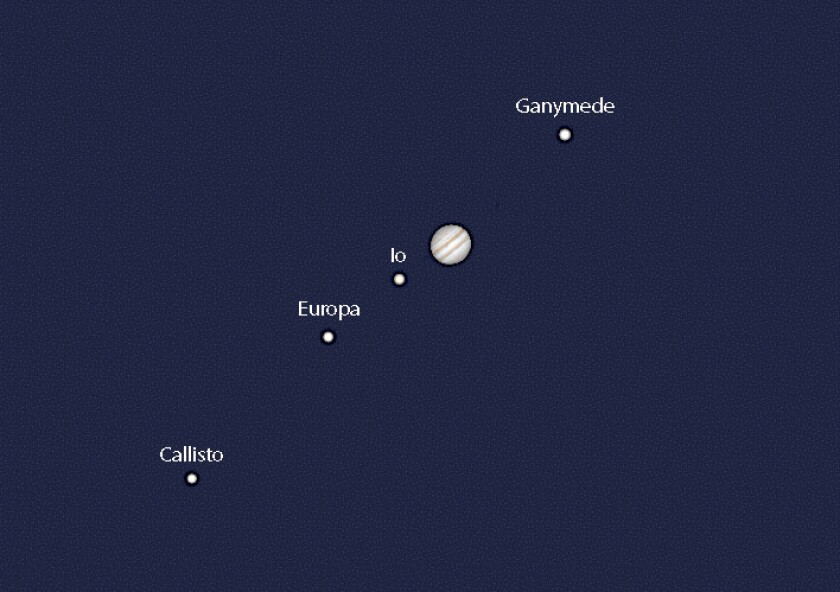
Watching the dance of the four brightest of Jupiter's 95 known moons is a lot of fun, too. Io, Europa, Ganymede and Callisto change position night after night like dancers in a slow-motion ballet. Each orbits the planet at a different rate just like the planets that orbit the sun, so they're always playing musical chairs. While visible in a pair of 10x binoculars, a small scope gives a much better view. To keep track of what moons are out and when, be sure to check out the Jupiter's Moons page at https://bit.ly/3ZFz4tl.
Jupiter will vie for your attention the remainder of the fall and all through the winter. Keep an eye on him. In time you'll notice that the planet doesn't sit still. It orbits the sun just like Earth but due to its greater distance takes 12 years to go full circle. Next year at this time you'll spot it in Gemini the Twins, the constellation located immediately east of Taurus.
ADVERTISEMENT
If you continue to follow Jupiter year after year, you'll have the pleasure of seeing it return to Taurus. That happens in 2036, when you'll be 12 years older. Or maybe you'd prefer to count birthdays in Jupiter-years, in which case you'll be just one year older.
Still looking for a holiday gift? If you'd like a copy of my recently-published "Magnificent Aurora — A Complete Guide to Nature's Greatest Light Show," please contact me at duluthaurora@gmail.com for signed copy.

